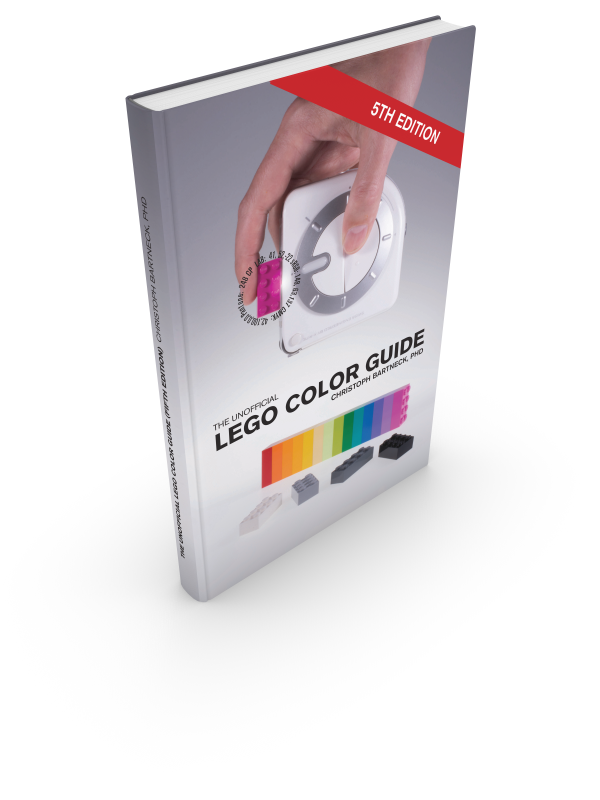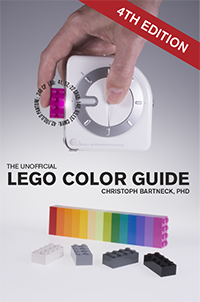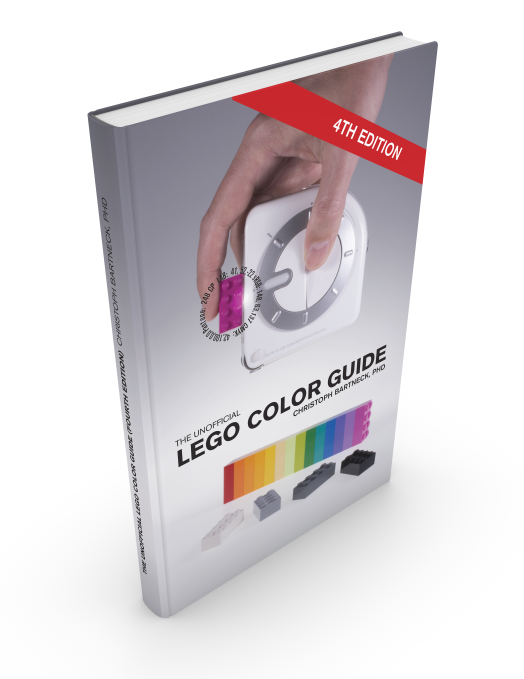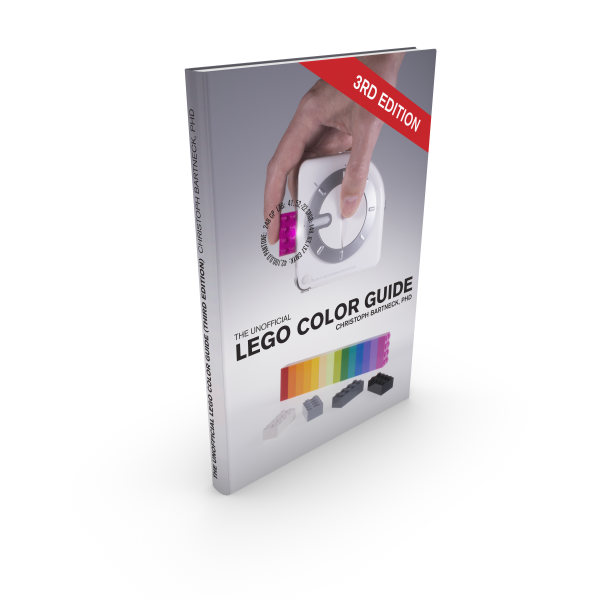I am happy to announce that the fifth edition of the The Unofficial LEGO Color Guide is now available. The book is available as a paperback and hardcover from Amazon.com. An eBook (PDF) is available from Lulu.
The LEGO company introduced several new colors in recent years and while most of them will remain exotic outliers, it is still worthwhile to include them in this catalog. A notable exception is the Medium Brown color, which is a welcomed addition to the spectrum of skin colors.
It is also important to notice that since the LEGO company took over Bricklink, some changes to the nomenclature have been made. Six colors were renamed. Most of these changes included the word “Flesh”. For example, Medium Dark Flesh was renamed to Medium Nougat and Light Flesh was renamed to Light Nougat.
Around 26 colors that are in this catalog have now also been adopted by Bricklink and hence their meta information has been added, such as their rarity and their Bricklink ID. In addition, the color proximity scores between the different colors are now included. A low score indicates a similar color.
Another improvement to the book is the rarity indicator. It is now being calculated based on a decimal scale. Colors that occur in more than 1000 parts are labeled “Many”, colors that occur more than 100 times “Several”, more than 10 times “Some” and more than 1 time “Few”. Colors that are not listed as an official brick are considered “rare”.
An important update happened behind the scenes. In the past I exported the color database to Adobe InDesign and then create the catalog from there. This process was complicated, labour intensive and error prone. The database has now been changed to create the catalog pages directly. Unfortunately, not all the design tricks possible with InDesign can be replicated with the database. The visual design was therefore modernised and extended.
Sample Pages
Here are some sample pages that show you the main section of the book.
sample-from-the-unofficial-lego-color-guide-fifth-editionI would also like to address one of the major criticisms that have been voiced. The ink colors in the book do not match the plastic colors of LEGO bricks. Printing is typically done with four colors: cyan, magenta, yellow and key (black). The mixing of these pigments opens a certain color space and many of LEGO’s colors are outside of this color space. Some LEGO colors cannot be printed on paper. You computer screen or your mobile phone screen, however, have a much bigger color space and they are capable of approximating the LEGO colors much better. For identifying colors I would therefore recommend the eBook PDF and for lexical use the books. I hope you enjoy this updated and extended fifth edition.




